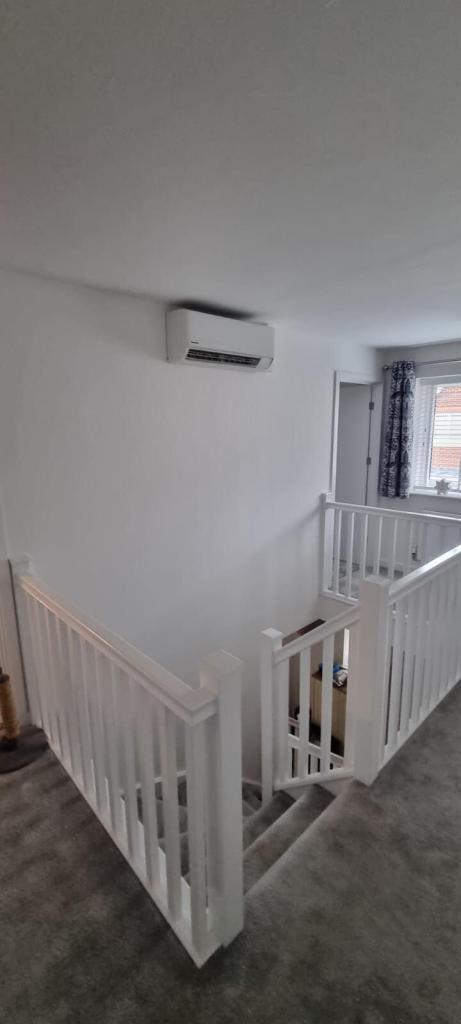The strategic placement of a single air conditioning unit on a first-floor landing in a multi-story home presents a nuanced approach to climate control, offering both potential efficiencies and inherent limitations. While seemingly a cost-effective and centralized solution, its benefits are primarily realized in specific home layouts and depend heavily on supplementary measures to achieve widespread comfort.

One of the primary advantages of this placement is the potential for centralized cooling of shared spaces. A first-floor landing often acts as a hub, connecting various rooms, especially bedrooms on the upper level, and sometimes living areas on the ground floor via a staircase. By positioning an AC unit here, the cool air can theoretically cascade down the stairs to the ground floor and rise (to some extent, as cold air tends to sink) to the adjacent rooms on the first floor. This can create a general reduction in ambient temperature across a significant portion of the home, offering a degree of comfort without the expense and complexity of multiple units.

Furthermore, a single unit often translates to lower initial installation costs compared to a multi-zone system or individual units in each room. The need for less ductwork (or none at all, in the case of a ductless mini-split) and fewer outdoor compressors reduces the upfront financial outlay. This can be particularly appealing for homeowners on a budget who still seek to improve the overall comfort of their residence. Maintenance can also be simplified, as there is only one unit to service and troubleshoot.

However, the effectiveness of this approach is critically dependent on several factors. The “benefits” are often a trade-off against optimal, uniform cooling. Air conditioning units are designed to sense the temperature in their immediate vicinity. A unit on a landing will primarily cool the landing itself, with a significant amount of air escaping down the staircase and potentially struggling to penetrate deeply into individual bedrooms or other enclosed spaces. This can lead to uneven temperature distribution, where the landing is comfortably cool, but adjacent rooms remain warmer, especially those further from the unit or with doors closed. The natural tendency of cool air to sink means that the lower floors might benefit more than the upper rooms, even if the unit is placed upstairs.

To maximize any benefits, careful consideration of the unit’s power and airflow is crucial. A larger, more powerful unit might be needed to compensate for the less direct cooling, but even then, it risks overcooling the immediate landing area. Furthermore, encouraging airflow through the house, such as by keeping bedroom doors open and using ceiling fans within individual rooms, can help distribute the cooled air more effectively. Strategic placement of the unit, such as higher up on the wall to leverage the natural descent of cool air, can also contribute to better spread.

In conclusion, while installing a single air conditioning unit on a first-floor landing can offer a cost-effective and centralized approach to temperature regulation in multi-story homes, its benefits are often limited by the inherent challenges of airflow and temperature distribution. It can provide a general sense of cool in shared areas and reduce overall heat, but it is unlikely to achieve the precise, room-by-room comfort of a multi-zone system. For optimal and uniform cooling across a multi-story dwelling, dedicated units or a zoned HVAC system that allows for individual temperature control in different areas remains the superior, albeit more expensive, solution. The choice depends on a homeowner’s priorities, balancing initial investment with desired comfort levels and energy efficiency over the long term.
